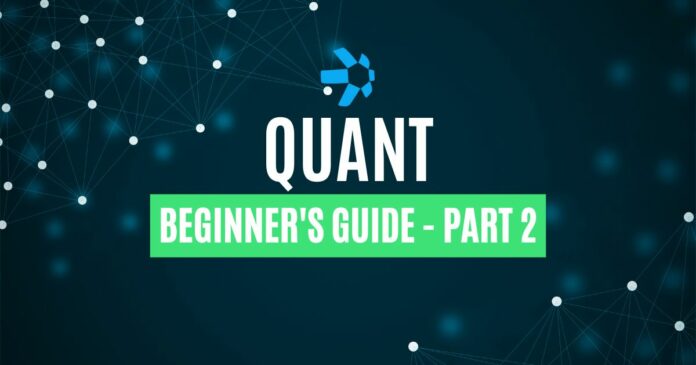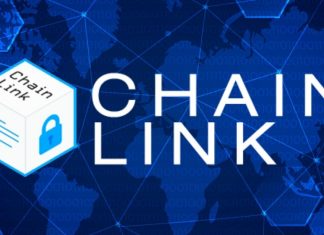Gilbert Verdian founded Quant Network in 2015 to create a fully interoperable blockchain environment.
We look closely at Quant Network and its ecosystem in this two-part series. In this second part, we examine the tokenomics and use cases. (You can read the first part of our article series here.)
$QNT Token Tokenomics
Quant ($QNT) is the native token that powers Quant Network’s suite of applications. It is an ERC-20 token compatible with the Ethereum network.
The project has a market cap of $2.1 billion and boasts a daily volume of $36 million. Comparing and contrasting with a project of similar valuation, we can see that $QNT is lagging in terms of trading volume. For example, $NEAR also occupies a $2.1 billion market cap but has $234 million in the last 24 hours volume. Is it an opportunity? Let’s find out.
Before diving further, let’s investigate the circulating and max supply for $QNT and who holds how much. A total of 12 million $QNT coins are circulating in the market. The token, by design, has a total supply of 14,612,493 coins. The team holds the extra two million, and these tokens are unlocked and can be sold or issued at any time. That’s around 14% of the total supply!
At the time of writing, $QNT is trading at $145, well below its all-time high. The token reached its all-time high of $427.42 on September 11, 2021. At the same time, the lowest-ever price for $QNT was $0.21 on August 23, 2018.
Initially, the token’s total supply got divided among various network stakeholders, including the public. The team sold 9.9 million tokens to the public during the initial coin offering. Also, it kept 2.6 million tokens in its reserve to keep the project running. Later, the team also reserved 1.3 million tokens for the founders and 651k for advisors.
The token has several use cases too. Holders can use it for purchasing licenses, accessing platforms, and consumption fees.
Quant Token Use Cases
Several services or mApps can run on the Overledger OS of the Quant Network. The primary purpose of $QNT tokens is to provide developers access to these applications or services. End users will need $QNT to access mApps or the Overledger ecosystem.
Anyhow, $QNT tokens are necessary for developers to develop applications on the Overledger platform. But the licenses to use the services of the Quant Network are purchased by developers using fiat currency. These fiat currencies are converted into $QNT tokens by the Quant treasury, which implies that there is no need for businesses to deal with exchanges directly to make compliant purchases.
The payments for read-write operations to Overledger are also made similarly to licenses. Here, the users can make payments in $QNT based on a fiat value converted into Quant tokens using the Quant treasury. If the developers of the mApps wish to monetize their applications, they can charge their subscription fees in $QNT. In short, the $QNT token is essential to power the Quant Network.
It also hints that the $QNT reserves might not hit the market soon!
Tokenization
Tokenization is the process of converting any asset into digital entities or tokens. Essentially, these tokens are assets that contain all the sensitive information about it but do not compromise the security of the data. Quant offers tokenization services to its users via its Overledger OS. The service is called Overledger Tokenise.
Overledger Tokenise helps users to create tokens with little effort from their side. As we know, the most important and complicated part of creating a token is implementing its corresponding smart contract. Creating a secure smart contract and deploying it across blockchains takes a deep understanding of coding. The process is often costly and time-consuming as well.
Tokenise overcomes these issues by providing smart contract templates. These templates help users to create and deploy institutional-level tokens with relative ease. In addition, the QRC smart contracts can deploy the tokens across multiple networks. Since these contracts are blockchain agnostic and follow the standard specifications, there is no need to recode the contracts while deploying across various networks. The corresponding API is also deployed with each token, making developing and managing tokens much easier.
Crypto Regulation
The volatile nature of the cryptocurrency market can often prove risky for the holders and investors. Many governments and authorities have hence stated that regulating crypto assets is necessary. The Financial Services and Markets Bill by the UK government and the crypto assets regulation (MiCA) by the European Union are examples of these regulations. Also, the CEO of Quant, Gilbert Verdian, has openly welcomed these regulations. Also, $QNT is one of the few tokens that meet the ISO 20022 standards.
Quant Network and Web3 Interoperability
Interoperability is one of the significant issues faced by blockchain technology and Web3 in general. Interoperability is the ability of blockchains to communicate with each other. So, Web3 interoperability is the ability of different systems in the Web3 space to communicate with one another. The main goal of Quant was to improve the interoperability between various networks. Quant overcomes this issue by using its Overledger OS. This platform allows for the developing of various mApps that can operate across systems. Technologies like MLTS (Multi Ledger Token Solution) evolved, focusing on interoperability. In short, the Overledger OS of the Quant Network can help in improving the interoperability of Web3 systems.
⬆️ For more cryptocurrency news, check out the Altcoin Buzz YouTube channel.
⬆️ Our popular Altcoin Buzz Access group generates tons of alpha for our subscribers. And for a limited time, it’s Free. Click the link and join the conversation today.




























